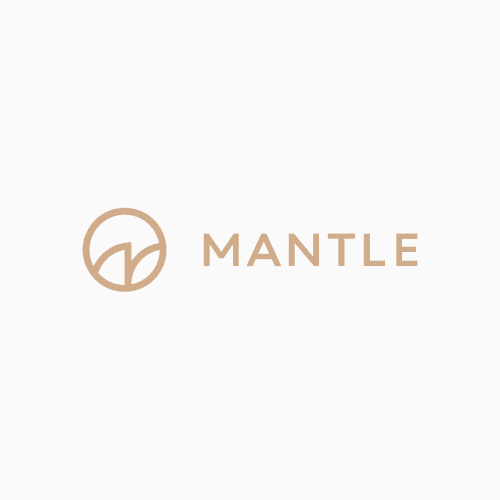What should family offices look out for before starting to invest?
Before family offices start investing, there are several factors they should consider. Firstly, the family office investor should have a clear strategy that aligns with their long-term goals and risk appetite. This investment strategy should be regularly reviewed and updated as needed. Secondly, family offices should conduct thorough due diligence on any potential investments to ensure they are sound and fit within their investment strategy. They should also ensure that they have a clear understanding of the terms and conditions of any investment they are considering. Thirdly, family offices should consider the potential impact of any investment on their wider portfolio, including any existing investments and the overall risk profile. Finally, family offices should ensure they have the necessary resources and expertise to make informed investment decisions, whether that be in-house or by partnering with external investment managers. By taking these factors into account, family offices can help ensure they make sound investments that align with their long-term goals.
Read our full investment guide here.
We rounded up a few companies that you might find interesting.
Family office assets
Asset classes refer to different categories of investments that family offices can use to diversify their portfolios. Generally, there are three commonly-recognised types: traditional, alternative, and new asset classes; below is an overview of them all.
Traditional asset classes
Traditional asset classes for family offices typically include publicly traded stocks, bonds, and cash equivalents such as money market funds. These asset classes are more established and offer a higher degree of liquidity and transparency than alternative investments. For example, stocks are shares of ownership in a company, and bonds represent a loan made to a corporation or government entity. The prices of these assets are publicly traded on exchanges which makes it easier to value them. Cash equivalents like money market funds are low-risk investments that provide a fixed return and can be easily converted to cash when needed. Overall, these traditional asset classes provide stability and diversification to family office investment portfolios.
Alternative asset classes
Alternative investments refer to non-traditional investments that are not typically traded on the stock market or involve cash and bonds. They are often used by investors to hedge or preserve capital during market downturns as they are generally not correlated with the broader financial markets. Additionally, alternative investments offer access to a wider range of assets including commodities, real estate, private equity, hedge funds and venture capital. Although these investments offer potentially high returns, they are also speculative by nature. For instance, investing in Bitcoin, a digital asset commodity, may generate significant returns over the long term but the value may also drop to zero.
Alternative asset classes include illiquid strategies comprising real assets, private equity, private credit, liquid strategies comprising hedge funds, venture capital and other liquid alternatives. Alternative assets cannot be converted into cash on short notice as they are not publicly traded.
In addition to these, family offices have recently broadened their focus to include other investments in their asset allocation. This is driven by the low-interest environment, improved capabilities on the investment management front and the need to hedge against bonds and equities. As a result, many are actively hunting new opportunities in emerging asset classes, some of which are based on traditional asset classes, while others are entirely new.
New asset classes for family offices
New asset classes for family offices typically refer to investment opportunities that have emerged in recent years or have gained popularity among investors. These asset classes are often not well established, and their potential returns and risks may not be fully understood. Examples of such assets are private credit, impact investments, art and collectables, and even virtual real estate in video games
Family office asset allocation
Family office investors typically engage in asset allocation as a means of managing their investment portfolios. This process involves determining the optimal mix of asset classes that will help achieve the family’s investment objectives while also managing risk. Asset allocation decisions are determined by a number of factors, including the family’s risk tolerance, investment goals, and time horizon. Family offices may also take into account the broader economic and market environment, as well as any tax implications of their investment decisions. The goal of allocating assets is to build diversified portfolio that helps achieving the family’s long-term investment goals.
How do family offices invest?
Here’s a look at some of the most common asset classes for family offices investing, including some of the most interesting emerging asset classes in the alternative investment space.
Technology
Tech startup companies are lucrative investment opportunities because of their potential for rapid growth and profitability. Typically, venture capital firms and private equity firms were at the helm when it came to funding these companies. However, over the last decade, family offices have become key contenders for early-stage and seed investing in tech companies.
Recurring revenue
Recurring revenue as an asset class is based on traditional fixed income but with higher liquidity and diversification. It allows investors to invest in fixed-income-like products for recurring revenue streams. Many subscription-based SaaS and e-commerce companies realise that equity and debt are not optimal ways to finance growth. As a result, opting to trade their monthly recurring revenue to secure upfront revenue without dilution and debt burden is becoming increasingly attractive.
Co-working
The COVID-19 pandemic forever changed the way the world works. Post-Covid, companies are navigating what the return to the office looks like while assessing their existing spaces. Due to work-from-home orders, there was a massive shift towards hybrid workplaces with greater flexibility becoming the norm. Co-working spaces are thus fast becoming an emerging asset class. They are regarded as a separate asset class due to their unique risk profile with the primary variable based on the tenant’s ability to pay rent.
Cryptocurrency, Digital Assets & Blockchain
Blockchain is an enabler of many of these new asset classes. Not only is cryptocurrency trading built on it, but the technology has also been adopted across multiple verticals as a value-add to businesses. Venture capitalists, in particular, have shown interest in digital assets and blockchain investments, spending an estimated $26 billion in 2022.
Carbon trading
As the war on climate change intensifies, carbon trading continues to emerge as a new asset class. The carbon market grew by over 20% in 2020, its fourth year of consecutive growth, and is showing no signs of slowing down. For family offices with mandates focused on diversification into sustainable investments, this is an interesting opportunity to get into an immature but growing market. However, as with many sustainable investments, greenwashing is common, so securing advisors with experience in the field is highly recommended.
Real estate
Real estate makes the hallmark of a balanced family office portfolio because of its stable and tangible nature. They act as a counterbalance against inflation, are excellent candidates for long-term cash flow, and can provide numerous tax benefits if invested correctly. This is why American family offices had doubled down on implementing real estate assets into their portfolios including direct investments, REITs, crowdfunding, and hedge funds. However, just like any other market, investing in real estate also has some specific downsides. These include market crashes as was evident during the pandemic, local tax law changes to consider and lack of liquidity.

With new wealth coming online, there is a rise in alternate asset classes getting a lot of attention from family offices.
Private equity
Private equity is an asset class that refers to investments made in privately-held companies that are not listed on a public stock exchange. Family offices invest in private equity to generate long-term capital appreciation and diversify their portfolios. Private equity firms raise funds from investors, including family offices, to buy and manage companies that have the potential for growth and improvement. Family offices may also co-invest alongside private equity firms or take direct ownership stakes in companies. However, investing in private equity carries higher risks compared to traditional investments, and family offices must carefully evaluate the potential returns and risks before making any investments.
Direct investments
Direct investments are investments made by family offices directly into private companies, startups, or real estate properties rather than through intermediaries like private equity or venture capital funds. Direct investments offer family offices more control over the investment process, as they can conduct their own due diligence and negotiate the terms of the investment directly with the target company or property owners. This asset class offers the potential for higher returns as it does not involve management fees or carried interest that is charged by intermediaries.
Collectables
From fine art and vintage wines, sports memorabilia and Pokemon cards to Non-fungible tokens (NFTs) and Funko (FNKO) figurines are all becoming part of a new emerging asset class known as collectables. It is estimated that the collectables industry was worth $412 billion in 2020 and that it is expected to reach $628 billion by 2031.
Venture capital
As most family office investors look for ways to diversify their portfolios across alternative and traditional investments, ensuring both security and high returns, venture capital remains a popular asset class. Venture capital sees family office investing into companies close to listing or perhaps on the brink of buy-out and tends to offer the advantage that its performance is completely uncorrelated with public equity markets. Family offices that want to invest in startups effectively have three options; they can invest directly, through a venture capital partner, or they can opt for a combination of the two, often known as a hybrid approach.
Impact investing
There has been much research about impact investment, which aims to create positive social or environmental impact beyond financial return, as a new asset class. Typically made in private markets by providing debt or equity to mission-driven businesses, impact investing has caught the eye of a wide range of investors, including large-scale financial institutions, pension funds, family offices, private wealth managers, foundations, individuals, commercial banks, and development finance institutions. The impact market was estimated to be worth over $715 billion at the end of 2019, according to the GIIN, and continues to show incredible growth.
Art
The potential of art as an investment class emerged after the financial crisis of 2008 which brought into the limelight the stability that portfolio diversification offers against market volatility. Art was seen as an excellent way to diversify portfolios since it did not move up and down in value along with the market. Private wealth managers capitalised on this and by 2018, the global art market had more than tripled in value since 2003. However, just like the collectables market, the painstaking transaction costs, high chances of fraud, and illiquidity deter many family offices from looking into art as an investment class.
Music royalty
Spotify highlighted that it paid over $7 billion in royalties in 2021. The entirety of this revenue was passively generated and required little to no active management whatsoever. So, what is this magical new asset class?
Music royalties are revenues that are generated when an artist’s intellectual property, like the copyrighted sound recording or the composition, is played or used. Not only is the revenue generated from royalties passive but it is also virtually shielded from the traditional financial market and its volatilities. However, it does come with its fair share of risks. For example, the revenue streams can fluctuate wildly subject to the popularity of an artist and it can be difficult to gauge the cash flow yield of your investment in the long run.
Nature
Spurned on by carbon trading, natural climate solutions (NCS) are ways to reduce carbon emissions through conservation, restoration, and improved management of forests, grasslands, and wetlands across the globe. Given their potential to diminish greenhouse gas emissions, their comparatively low marginal costs, and their ability to deliver other benefits, these solutions are expected to be a key component of any pathway that contributes to slowing global warming. NCS also represent a new asset class. Despite uncertainty about returns given due to the volatility of carbon prices, the sector is promising, with an estimated $630 billion invested as climate capital annually. More institutional investors moving into this space will undoubtedly help mature this asset class and make it more mainstream.
Hedge funds
A Hedge fund is a pooled investment from private investors that is managed by a professional fund manager. It is structured as a limited partnership and is actively managed to generate maximum returns. Family offices have long been a prime source of capital for hedge funds. In fact, a 2011 Infovest21 survey highlighted that a typical family office invested over a quarter of their client’s assets in hedge funds. This is perhaps because active returns from hedge funds are often positive even during falling equity or bond markets. However, losses from hedge funds can be quite severe and they are also more illiquid than some of the other forms of systemic investments like mutual funds.
As existing market trends continue, the search for yield drives family offices to explore more speculative asset classes than ever before. This is equally daunting and exciting, but opportunities are quite clearly there for the taking. When it comes to deciding on family office investments, there is an endless option of interesting asset classes to choose from.








